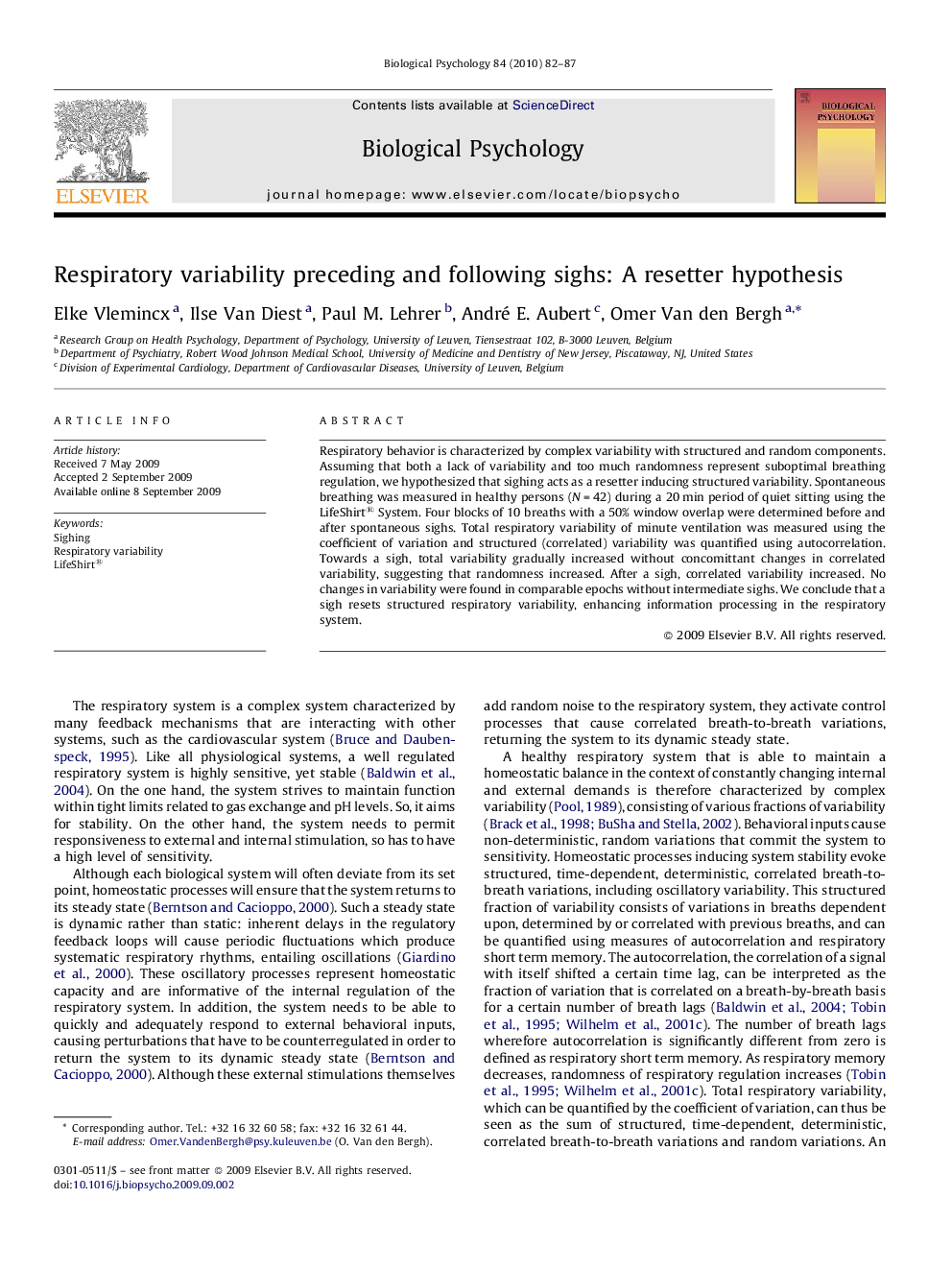| Article ID | Journal | Published Year | Pages | File Type |
|---|---|---|---|---|
| 921225 | Biological Psychology | 2010 | 6 Pages |
Respiratory behavior is characterized by complex variability with structured and random components. Assuming that both a lack of variability and too much randomness represent suboptimal breathing regulation, we hypothesized that sighing acts as a resetter inducing structured variability. Spontaneous breathing was measured in healthy persons (N = 42) during a 20 min period of quiet sitting using the LifeShirt® System. Four blocks of 10 breaths with a 50% window overlap were determined before and after spontaneous sighs. Total respiratory variability of minute ventilation was measured using the coefficient of variation and structured (correlated) variability was quantified using autocorrelation. Towards a sigh, total variability gradually increased without concomittant changes in correlated variability, suggesting that randomness increased. After a sigh, correlated variability increased. No changes in variability were found in comparable epochs without intermediate sighs. We conclude that a sigh resets structured respiratory variability, enhancing information processing in the respiratory system.
